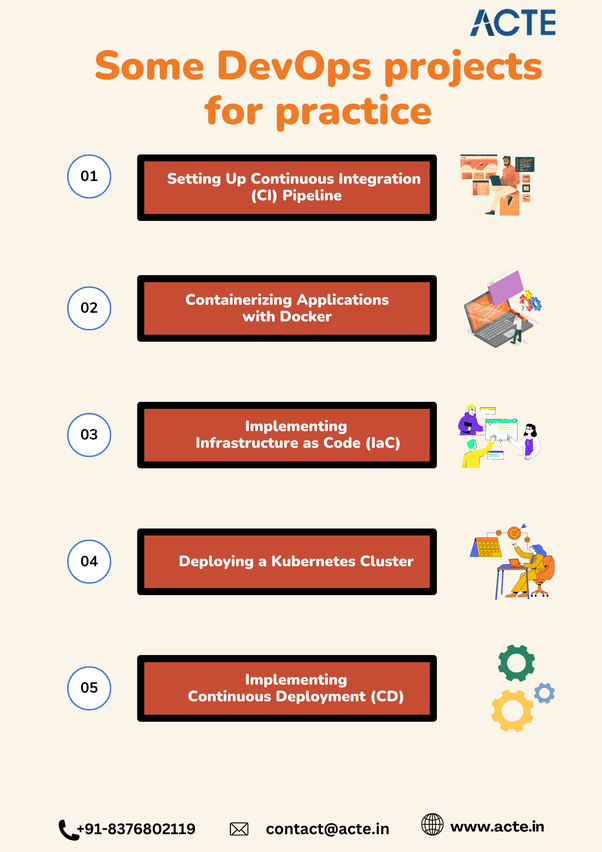In today's rapidly evolving technological landscape, ensuring high availability and resilience of systems is paramount for businesses to maintain a competitive edge and deliver seamless services to their customers. DevOps practices have emerged as a crucial approach to achieving these goals, emphasizing collaboration, automation, and continuous improvement across development and operations teams. In this blog post, we'll explore some DevOps projects aimed at building resilient systems for high availability.
Invest in DevOps training in Coimbatore the accelerator for your team’s journey from good to exceptional in the world of software development.

1. Setting Up Continuous Integration (CI) Pipeline
- Description: Build a CI pipeline using tools like Jenkins, GitLab CI, or Travis CI.
- Steps: Configure a source code repository (GitHub, GitLab, Bitbucket). Set up a CI server (Jenkins, GitLab CI). Create a pipeline script to automate code builds, tests, and deployment.
- Benefits: Learn the fundamentals of automating software development processes.
2. Containerizing Applications with Docker
- Description: Containerize a simple web application using Docker.
- Steps: Write a Dockerfile to define the application environment. Build a Docker image. Run and test the containerized application locally.
- Benefits: Understand containerization principles and Docker fundamentals.
3. Implementing Infrastructure as Code (IaC)
- Description: Use a tool like Terraform or AWS CloudFormation to provision infrastructure.
- Steps: Define infrastructure requirements in code. Use Terraform or CloudFormation to deploy infrastructure on a cloud platform. Validate and manage infrastructure changes through code.
- Benefits: Gain hands-on experience in automating infrastructure deployment and management.
4. Deploying a Kubernetes Cluster
- Description: Set up a Kubernetes cluster for container orchestration.
- Steps: Install and configure a Kubernetes cluster using tools like Minikube or Kubeadm.Deploy and manage containerized applications on the cluster. Explore Kubernetes features like Pods, Services, and Deployments.
- Benefits: Learn container orchestration principles and Kubernetes basics. Break free from limitations. Our DevOps online course empowers you to upscale your skills, all from the comfort of your home.

5. Implementing Continuous Deployment (CD)
- Description: Set up a continuous deployment pipeline to automate application deployments.
- Steps: Extend the CI pipeline to include automated deployment steps. Use deployment tools like Ansible, Chef, or Puppet to deploy applications to target environments. Configure automatic rollback mechanisms for failed deployments.
- Benefits: Understand the end-to-end process of automating software delivery.
In conclusion, DevOps practices play a crucial role in building resilient systems for high availability, enabling organizations to adapt to changing business requirements and deliver reliable services to users. By embracing automation, monitoring, fault tolerance, and immutable infrastructure, teams can enhance system resilience, reduce downtime, and ultimately, improve the overall customer experience. As technology continues to evolve, investing in DevOps initiatives will remain essential for organizations striving to stay competitive in today's digital landscape.

No comments yet